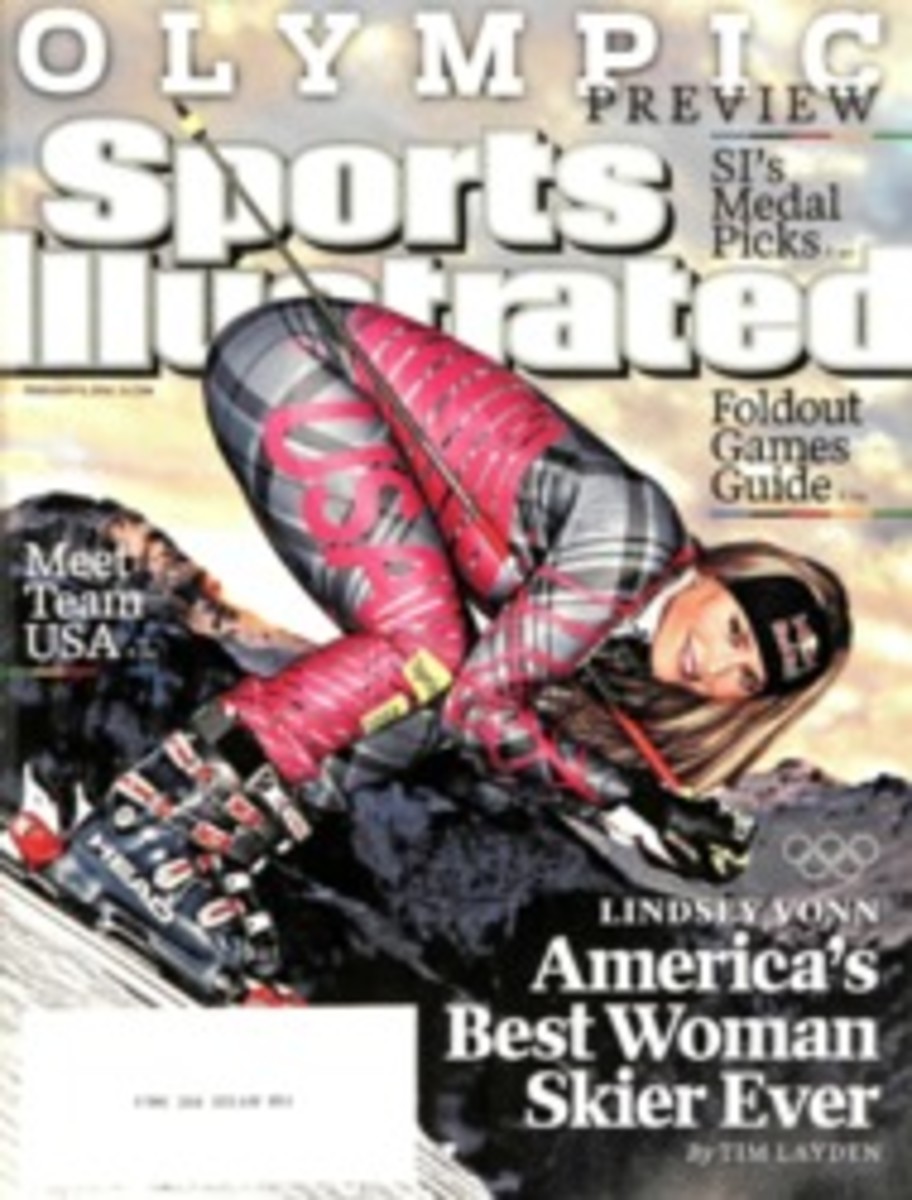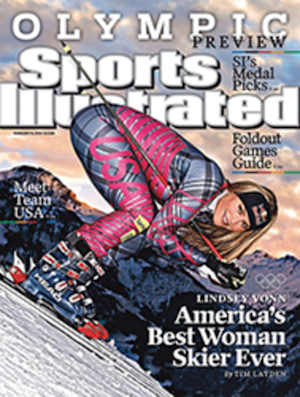
Man on The Spot
Dwight Freeney's brick mansion 20 miles north of downtown Indianapolis has white columns in the front, a view of a lake out back and feels a little like a science fair inside.
Upstairs in his bedroom is the hyperbaric chamber he uses more often than an easy chair, next to the portable infrared sauna that he sits in for 45 minutes twice a week, his head poking out of the fabric casing. Downstairs in the kitchen is the ARP machine—short for Accelerated Recovery Performance—that sends electrical currents into his muscles through the adhesive pads he sticks on his legs, stomach, chest and back. In the basement gym is the inflatable Posture Pump that he lies inside, as well as the inversion table from which he hangs upside down in 15-minute interval. At the top of the staircase on the way to his home office are two laser heads that shoot beams of light into the cells of any sore body parts, along with a manual that dictates what laser frequencies to use and for how long depending on his ailment.
These are the trappings and tools of a 21st-century defensive end, one who's as compulsive about his body as Peyton Manning is about his playbook. "I know it's weird," Freeney says. "Everything I do is weird. I ask myself all the time, What the hell am I doing?"
Whatever it takes, one would surmise, to recover from the right ankle injury—reported as a sprain by the Colts and a torn ligament by ESPN—that he sustained while chasing Jets quarterback Mark Sanchez in the final minutes of the AFC Championship Game. Considering that the Saints have the most prolific scoring offense in the NFL, and that quarterback Drew Brees completed a league-record 70.6% of his passes this season, the Colts need Freeney to be at something near full speed on Sunday.
Teammates may sometimes laugh at their resident lab rat—indeed, much of his unorthodox regimen is scientifically unproven—but they marvel at him too. Still pirouetting around left tackles in his eighth season, Freeney finished third in the NFL with 13½ sacks and was voted to his fifth Pro Bowl. "Every time a quarterback drops back, I feel like there's a bomb in the stadium and it's about to go off," Freeney says. "I have three seconds to defuse it or the stadium is going to blow."
For Indy's Jack Bauer, everything is dedicated to beating time. His diet, for instance, makes supermodels look indulgent. From the Wednesday morning before the Jets game to kickoff that Sunday afternoon he ate beef and pinto beans and nothing else, not even for breakfast. He drinks only grape juice, water and occasionally tea as a treat. If he goes to a restaurant he brings his ingredients with him and instructs the chef on how he wants it prepared—no oil, no pepper, no garlic, no garnish, no powder and certainly no pan spray. His digestive system is so streamlined, he says, that if he swallows a sprig of parsley he feels guilty: "I could gain two pounds!"
After each game Freeney allows himself two cheat days when he consumes whatever he wants—he often puts on five pounds on Tuesday, loses them by Thursday. He weighs himself on two scales every morning, calculating his incremental weight gain or loss to the tenth of a pound, and ingests accordingly. If he's playing a passing team like New Orleans, Freeney wants to weigh 262 at kickoff. If he is playing a running team like the Jets he wants to be 267. Before Indy's divisional playoff game against the Ravens, Freeney was aghast to find on Friday that he topped out at an unseemly 269. "It's because I had some kidney beans," he surmises.
This diet from hell—known as Sari Mellman's Dietary Progression—changes slightly every few months, when his blood is drawn and analyzed to determine what foods maximize his "inflammatory response and increase cellular function," according to his food coach, Leon Mellman. The binder that Freeney keeps in his kitchen tells him what his body embraces and what it rejects: pork over chicken, tomatoes rather than lettuce, red grapes instead of white ones, Fuji apples instead of Granny Smiths. "I don't even take a chance with my toothpaste," Freeney says. "I stick with Crest." He does not need to limit himself this way, but as Mellman says, "That's what makes him feel like Superman."
On the recommendation of several other NFL players, Freeney contacted Leon's mother, Sari, a licensed nutrition counselor in South Florida, after he was drafted out of Syracuse eight years ago. He kept cramping up during games, from his feet all the way "to my tongue," he says, and trainers kept telling him to eat bananas for potassium. After analyzing a sample of Freeney's blood, Sari conjectured that bananas were part of the problem. She dispatched Leon to Indianapolis—and he still meets with Freeney before every game, home and road. Leon brings with him a nervous-system scanner that he runs along Freeney's spinal column with the intention of locating inflammation in his nervous system. The scanner is equipped with digital cameras "to evaluate the soft tissue and take pictures of how the nerves communicate," says Leon. A chiropractor in addition to food coach, Leon uses his hands to adjust Freeney's spinal column. When he leaves, Superman is ready to fly.
Freeney embodies the defensive philosophy of former Colts coach Tony Dungy—"The premise is based on speed and aggression, principally from the front four," explains team president Bill Polian—and that approach continued under new coach Jim Caldwell and his defensive coordinator, Larry Coyer, whose many blitzes make it more difficult for opponents to double- and triple-team Freeney. At 6'1" and anywhere from 262 to 267 pounds depending on the week, he's so fast that offensive linemen sometimes prepare for him by trying to block cornerbacks. The Jets used two men on Freeney for much of the AFC Championship Game, but that only freed up other members of the front seven, including defensive end Robert Mathis, to harass Sanchez.
Mathis's workout regimen and diet are a little more traditional than Freeney's—fewer laser beams, more chicken wings—but as bookends they complement each other well. They were drafted in consecutive years, Freeney in 2002 and Mathis in '03, and when they were younger they collapsed the pocket with such speed that they endangered each other as much as any quarterback. "I would rush around the edge and run right into him," Mathis says. "It happened all the time. We would lay each other out. And you know, defensive guys don't like to get hit."
Now that they've played together for seven seasons—combining for 45 sacks over the past two—they know each other as well as Manning and wideout Reggie Wayne. Before every snap Freeney and Mathis review their rush plan, and as the play develops they sense when they have to alter their routes. While Freeney likes to spin, Mathis likes to dip. If one goes outside, the other goes inside, saving the violent collisions for the guy holding the ball.
"It's a sight to see," says Colts defensive tackle Antonio Johnson. "They devour quarterbacks."
Indy can only hope that, with help from some nonstandard technology, a rigorous rehab regimen and maybe a few helpings of pinto beans, Drew Brees is next on the menu.
PHOTO
DAVID E. KLUTHO (FREENEY, TOP)
MEANS TO AN END Compulsive about his body, Freeney will be working overtime to heal his injured ankle.
PHOTO
ANDREW HANCOCK (FREENEY, RIGHT)
[See caption above]

